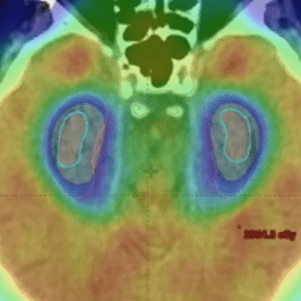I now realize as an attending, I wish I was better with plan review. We had rockstar dosi so I took this sorely for granted, but now have someone new I work with, and the plans are not meeting where I thought would be possible. I realize I never developed the language/deeper understanding to effectively communicate how to get to a better plan and I want to learn. The new dosimetrist is very good and hard working but not familiar with dose painting, inhomogeniety on SBRT plans, has difficulty pushing the optimizer on key OAR's if it creates insignificant breakup in the 100% prescription isodose line. On an SBRT case did not use arcs appropriately, so liver got roasted but still "met constraints".
When I ask another dosimetrist to take a look at the plan, it improves. So I am bit by bit adding knowledge on how to improve plans but was hoping to gain some tricks on what you guys do.
Is this something that has to be taught on a case by case basis? Are there "go to's" you guys try first? I asked someone in our department to teach me VMAT planning so at least I can get a better understanding beyond what we learned in physics.
When I ask another dosimetrist to take a look at the plan, it improves. So I am bit by bit adding knowledge on how to improve plans but was hoping to gain some tricks on what you guys do.
Is this something that has to be taught on a case by case basis? Are there "go to's" you guys try first? I asked someone in our department to teach me VMAT planning so at least I can get a better understanding beyond what we learned in physics.


